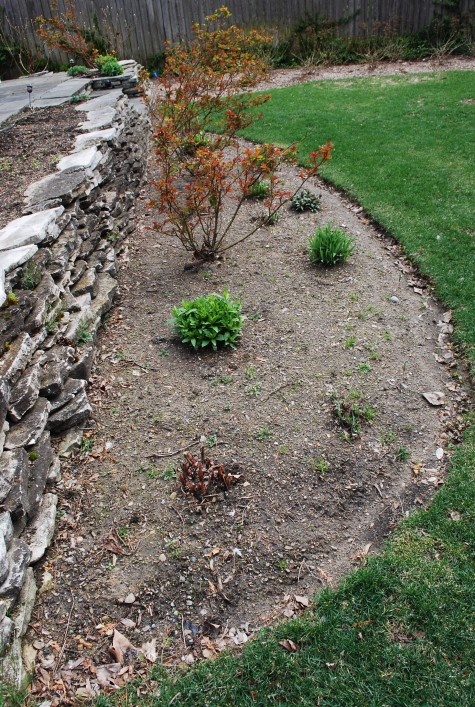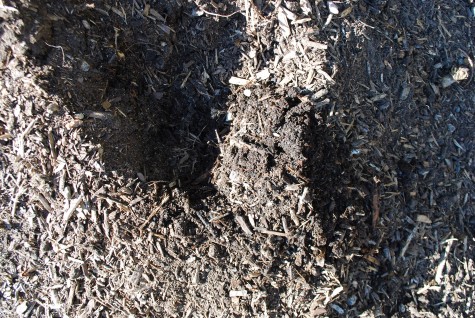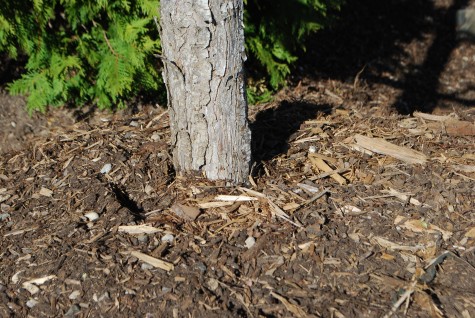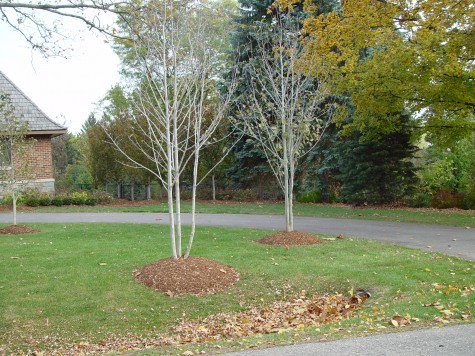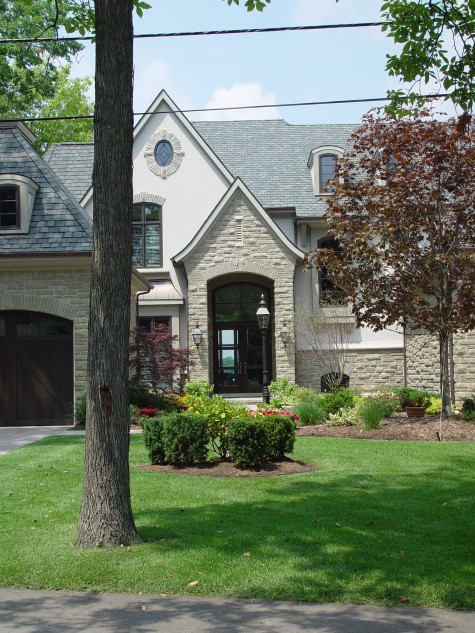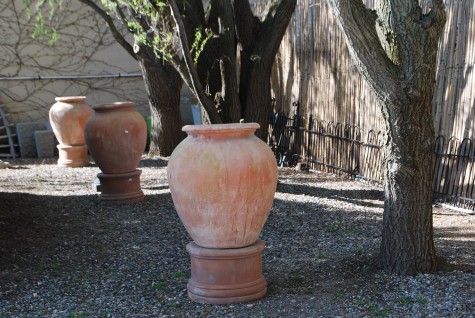What exactly is mulch? Well nothing much relating to gardening falls under the heading of “exactly”, but in general mulch refers to a covering applied to the surface of the soil. It might help to think of it as a blanket. The blanket on my bed keeps me evenly warm throughout the night. The key word here is not warm-it is evenly. If I am hot and then cold and then hot again, I wake up. If I am evenly comfortable, I sleep undisturbed.
Bare soil, exposed to sun and air, looses its water via evaporation quickly. A cover layer of mulch, which might be hardwood bark mulch, bark fines, or leaf mold slows the evaporation rate considerably. Mulch not only conserves existing water in the soil, it is easy to saturate with water-either from the sky, or the hose. Water on hard dry soil can run off before it has a chance to be absorbed. Peat moss mixed into soil aids in the retention of water, but as a mulch it has distinctive drawbacks. A thoroughly dry layer of peat is an excellent moisture repellant. The perennial bed pictured above will loose water at a fairly rapid rate on a really hot July day. Once we add more plants to this bed, we will mulch it.
Mulch discourages weeds from sprouting and growing. If weeds do sprout through the mulch, they are easier to pull from moist soil. Mulch applied in a very thick layer can smother plants. A thick layer of old newspapers decomposes slowly enough such that any plant underneath will perish. This can be handy, if you are trying to convert a grassy area to a garden. This method of preparing a bed for planting takes a lot less muscle than digging. What it does require is patience-time. It’s important to distinguish thick from solid. A pile of matted down grass clippings is missing one important component essential to decomposition. Air. Airless decomposition smells and looks bad. It feels like a cross between slime and sludge.
A thick layer of mulch is not necessarily better. 2-3 inches is plenty. When that layer of mulch decomposes, add another layer. Mulch piled up much higher may seen like a good labor saving idea, but this can suffocate plants-and this includes trees. 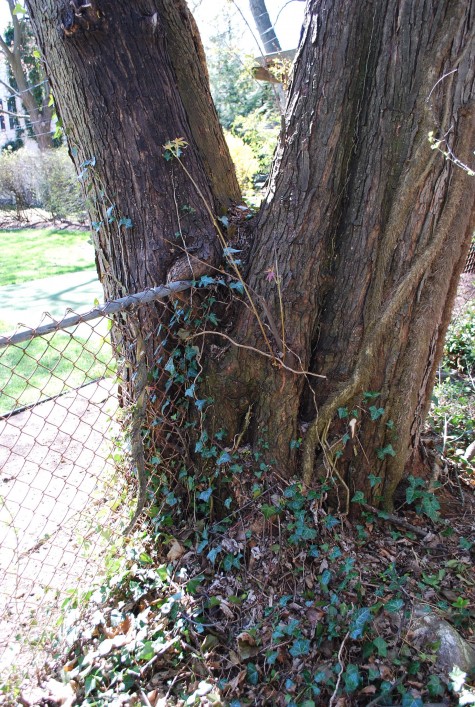
This tree grew into, around and through a chain link fence. It is thriving, despite this injury. 8 inches of mulch piled up around the trunk of this tree could do far more harm than what this fence has done. Note that there is groundcover, and a light layer of leaves at the bottom.
I have never been a fan of mulch rings around trees. I like trees set in the lawn, or in a garden bed. Mulch rings do discourage a person operating a lawnmower or weed whip from getting too close to, or injuring the bark of a tree, but it is much more utilitarian than it is beautiful.
This tree rises gracefully out of the lawn. This has a much more natural, and park-like look. The other landscape beds have a lot of bark visible. Mulch is good for plants, but it is not a substitute for plants. Granted plants need proper spacing from their neighbors in order to promote healthy growth, but bark mulch does not a garden make.
There are other materials that work as a mulch. Gravel is one of my favorites. Stone does decompose, but it decomposes imperceptibly. The entire side and back yard at the shop is mulched in gravel. Water drains through it. The wheels of our carts run over it easily. And it shades the ground from the drying eyes of the sun. The willows on the back lot line are planted in what amounts to big and little rocks, mixed with sand. The decomposed granite mulch helps to slow the evaporation of water from the gound long enough so the trees can get a drink.
Seeds will germinate, and plants will grow when conditions are right for them. The smallest bit of gravelly soil between the stones on this terrace provided the perfect conditions for a pansy seed to germinate. A sunny spot to bloom, and cool moist soil for the roots-courtesy of the mulch provided by this stone terrace.

